I recently decided to be tested for 150 different foods and chemical sensitivities. Why, you ask? Well, I have hypothyroidism.
For the past several years, I’ve pretty much just ignored it, other than taking a Synthroid pill every morning. It’s easy to remember when I wake up and then I don’t give any thought to it the rest of the day.
And, really, when I found out I had thyroid issues (LONG story…), my doctor told me that I would need to take this medication for the rest of my life and there wasn’t really much else I could do.
I kind of accepted that and moved on. Well, as I’ve been blogging about real food and the transition we’ve made, I’ve been coming across a lot of information regarding hypothyroidism and nutrition. They are extremely interconnected, but yet so many doctors don’t have enough (if any) nutrition education and are generally uninformed (and don’t have the time) to sit and work with patients on a case-by-case basis.
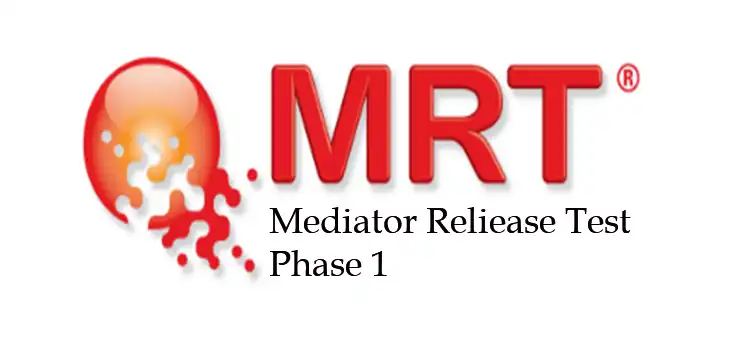
My Journey Of Dealing with Hypothyroidism
Well, the more I read about how other people completely weaned themselves off of their thyroid medication and now no longer have any symptoms, I started to get more and more interested in seeing if this was something I could do as well.
But, where to start? I read somewhere that I should look for a dietitian who is a Certified LEAP Therapist. I ‘googled’ this for Fort Wayne, IN, and came across Courtney Rinehold, RDN.
After attending a seminar, she presented at our local Y about nutrition and hypothyroidism, I realized this was something I wanted to pursue more. So, after a few emails back and forth, we decided that an MRT (Mediator Release Test) was the ideal first step.
This test is not cheap…and because I’m not anywhere close to meeting my annual deductible, there is no way it will be covered by my insurance. (Note: If I *had* met my deductible for this year, the test would have been mostly covered.) The test cost $395, which (in my world, anyway) is expensive.
The main reason I wanted to have the test done was to test for a gluten/wheat sensitivity. I’ve blogged about that topic before: Gluten-Free for Thyroid Health.
I had read MANY places that if I have hypothyroidism, gluten is a huge no-no. However, if I was going to cut out a specific type of food for the rest of my life, I wanted to be darn sure there was a good reason for it. So, after much discussion with my husband, we both decided it made sense for me to be tested so I could move forward with facts versus just speculation.
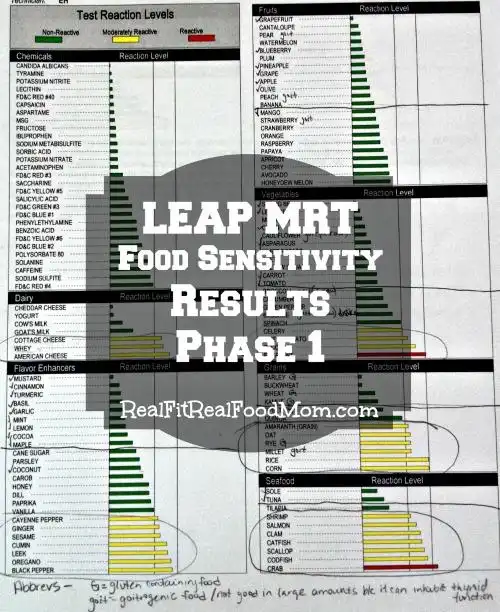
I had my blood test a little over a week ago and then met with Courtney yesterday to go over my results. It is so fascinating to see this report with so much specific information for ME.
The most surprising results were in the seafood category. I tested as ‘reactive’ to crab and ‘moderately reactive’ to shrimp, salmon, clam, catfish, scallops, and codfish. Interesting! The funny thing is that the last two times I ate salmon, I threw up!
Now, it could be a total coincidence, but it is kind of odd! And after the second time (just a couple of months ago), I told my husband I was taking a break from seafood. It’s definitely interesting that I’m more reactive to seafood than any other foods and maybe that somewhat explains what was going on the last few times I ate it.
The other highly reactive food is eggplant. I don’t know if I’ve ever even had eggplant! Anyway, this one won’t be all that hard for me to ‘give up.’ 🙂
How Does the Mediator Release Test Work?
So, how does the MRT work? To quote the information in my results booklet, “MRT is an indirect method of accurately measuring mediator release. MRT does this by measuring changes in the liquid-to-solids ratio of our blood after your blood has been exposed and incubated with the test substance. It accounts for all reactions by your immune cells.
This is done as an indicator that your immune cells have released chemical mediators such as histamines and others. Significant reactions are broken into either Reactive (red) or Moderately Reactive (yellow) categories, while insignificant reactions (green) are placed in the Low Reactive category.”
What’s interesting is that some of the foods I’m considered ‘moderately reactive’ to are foods I eat all the time and seem ‘healthy.’ However, the booklet states that foods I eat regularly are even more likely to be causing problems.
Food sensitivities develop over time and in a gradual manner, so this causes you to become accustomed to a certain amount of suffering which becomes “normal.” These foods might not cause any dramatic reactions after being eaten.
However, if I avoid these foods for a while and then reintroduce them, I may notice a very pronounced reaction. This will then tell me if that specific food is good for ME or not, even if the food has numerous other health benefits.
The Foods That I Tested Moderately Reactive To
Here are the foods that I tested moderately reactive to (quite a few!):
- Dairy: cottage cheese, whey, American cheese
- Vegetables: celery, sweet potato, zucchini (with eggplant being high reactive)
- Grains: amaranth, oat, rye, millet, rice, corn
- Seafood: shrimp, salmon, clam, catfish, scallop, codfish (and crab being high reactive)
- Meats/Poultry: chicken, beef
- Beans/Nuts/Legumes: garbanzo bean, almond, sunflower seed, hazelnut, walnut
- Flavor enhancers: cayenne pepper, ginger, sesame, cumin, leek, oregano, black pepper
- Miscellaneous: baker’s yeast
Note: The MRT also tests for chemical sensitivities (MSG, aspartame, yellow #6, etc, etc.), however, these aren’t ‘foods’ and I don’t plan to eat them anyway. My results show these were all non-reactive for me, but that still doesn’t mean I’m going to include them in my daily diet… 🙂
Working Mechanism of the Mediator Release Test
Here’s how this will work: the test results have identified which foods are causing me problems. Courtney (a registered dietitian) has helped develop a dietary ‘phases’ plan for me based on these results.
Phase 1 will be the most restrictive and will probably seem ‘difficult’ at times, however, it only lasts two weeks. I can handle that! I’m to eat these ‘approved’ foods only in their whole forms and cook from scratch using just the foods on my list. Organic isn’t considered mandatory, but it’s definitely preferred.
Thankfully, buying organic and cooking from scratch is nothing new to me!!
Allowed Foods During the Mediator Release Test Phase 1
I’ve broken down my results based on food categories and have included what I’m allowed to eat during phase 1. Again, it won’t be easy the whole time and I’m definitely going to miss some of my favorite foods…
However, I’m hoping that after the 3-6 months are up, we can gradually add some of these back in and see how my body handles each ‘new’ food.
And PLEASE remember… these results are extremely individualized. I am not in any way saying this is what YOU should eat. If you are interested in having your own food sensitivity testing done, make sure to work with a registered dietitian. And if you can find someone that specializes in LEAP, that’s even better!
Phase 1 (Days 1-14):
Protein: Turkey, Mutton, Egg, Sole, Tuna

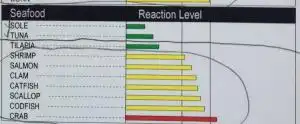
The turkey and mutton will need to be whole in form and cooked with only the other approved foods. I was able to find whole turkey breast, ground turkey, boneless mutton chops, and ground mutton at Seven Sons, so at least my meat will still be just as clean and natural as I’m used to.
I’m definitely looking forward to making turkey burgers! I also plan to eat quite a few eggs (local and pastured, also from Honored Prairie): hard-boiled, scrambled, fried, in a frittata/quiche, etc.
And I’ve never had sole before…so, I’m not so sure about that one, but maybe I’ll work up the courage to try it? And as far as the tuna goes, I’ve only ever eaten it out of a can. Unless I can find cans that are JUST tuna, I may be buying and cooking some from the seafood department and then shredding it myself. I will keep you posted on that one. 😉
I’m definitely disappointed that beef and chicken are on my list of moderately reactive foods…but hopefully, over time I can add those both back in. I shouldn’t be surprised they’re on there, though. Of all the meats I eat, those are the two I eat with the most frequency.
Grains & Starches: White Potato (Yep, That’s It!)
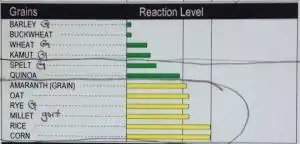
The results in this category were actually quite surprising and one of the reasons that I’m already glad I had this test done. I thought for sure that I would need to avoid gluten for life…
However, I actually had a low reaction to many gluten-containing grains! Barley, wheat, kamut, and spelt all contain gluten…and they were all green for me. Interesting! I’m very surprised that oats, rice, and corn are on the moderate list, though. 🙁
That’s a major bummer because I love all three of those!! Again, I’m hoping these will be something I can tolerate again someday. We shall see! During phase 1, we’re going to eliminate all other grains and see how it goes when we add them back in after the first week or two.
Courtney said she’s never had anyone react so low to wheat, so she’s curious to see if I’ll feel a difference with or without it (and I am, too, of course)! And since I’m a long distance runner, Courtney and I agreed that eating white potatoes would be helpful for me to include on my list of phase 1 approved foods.
Fruits: Apple, Grape, Grapefruit, Blueberry, Pineapple, Mango, Lemon, Banana
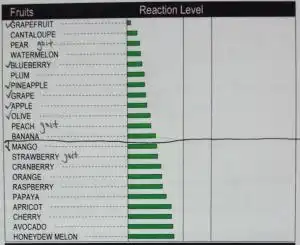
I am SO happy that I didn’t have any reactions to fruit. I love fruit and eat so much of it. And since fruits have lots of carbs, they’re great for me as a runner. Thankfully, I don’t have to cut back much on these. We’re going to start with a small number in the beginning and work our way up. I’ll definitely be looking forward to adding more back in as time goes on. 🙂
Vegetables: String Beans, Lettuce, Asparagus, Carrot, Cauliflower, Onion, Peas, Tomato
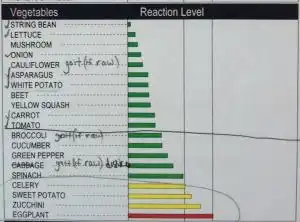
This gives me a fairly wide range of veggies to eat during the strictest phase and I’m happy about that!
Dairy: None During Phase 1

Even though I actually had low reactions to cheddar cheese, yogurt, and cow’s milk…because I feel like my stomach can get upset after eating dairy, we’ve decided to eliminate it during phase 1 and then gradually add it back in. I can eat pecans (more on this further down), so I may try to make homemade pecan milk sometime!
Nuts, Seeds, Oils: Pecans (Nut, Oil, Butter), Peanuts (Nut, Butter), Olive Oil, and Coconut Oil
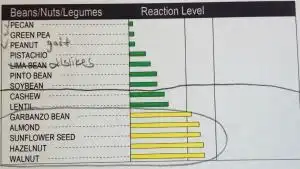
I was definitely surprised that I was reactive to almonds and walnuts, and I’m definitely going to miss those during the first few phases, but it will be interesting to see how I feel when I add them back in. I’ve eaten a lot of almonds over the last year (almond butter, almond milk, dry roasted for a snack, in granola/bites, etc), so maybe that’s part of the reason I’ve developed a sensitivity to them?
Flavor Enhancers: Turmeric, Lemon, Cinnamon, Garlic, Mustard Powder, Basil, Cocoa, Maple Syrup, Mint
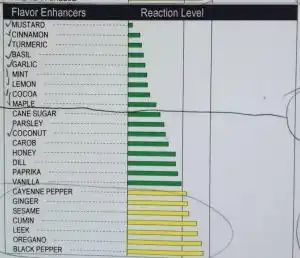
This allows me quite a variety and will help with seasoning the limited foods I can eat during phase 1.
Miscellaneous: Apple Cider Vinegar, White Vinegar, Baking Soda, Water (Of Course)

We thought it was interesting that I reacted to baker’s yeast, something I use in my homemade bread recipe, of course. So, I won’t be eating my own bread for a few months…but I’ll probably still keep making it for my kids’ sandwiches and toast.
How Did I Manage My Hypothyroidism?
Here are some other nutritional ‘interventions’ that will eventually help me manage my hypothyroidism better. (I’m not going to get into a lot of detail with this because these things are all highly personalized and it would be too much to list everything here.)
- Limit goitrogenic foods (naturally occurring substances that can interfere with thyroid gland function by inhibiting iodine uptake). If these foods are eaten in excess, they can cause problems. This list is NOT complete, however, broccoli, cauliflower, spinach, strawberries, pears, peaches, and peanuts are just a few of the foods I eat that I will need to somewhat limit going forward. It’s important to note that many of these foods can be eaten once cooked; it’s when they’re consumed raw that the goitrogens can interfere with thyroid function.
- Include more iodine and selenium-rich foods. I may start adding table salt with iodine back into my diet, something that’s especially important for me since I don’t eat processed foods. I also need the extra salt because I sweat a lot more than most people because of all the running I do. This is also why I’ve been eating so many Brazil nuts lately. Brazil nuts are an excellent source of selenium and just 2-4 per day can provide all you need.
- Include more tyrosine-rich foods, non-cruciferous veggies, and lots of fruit. Some examples of tyrosine-rich foods that I should be able to eat (based on my MRT results) are eggs, bananas, and pumpkins seeds. Also, flaxseed and chia seeds are good sources for omega-3.
- Drink plenty of water
- Use natural beauty products, household cleaners, etc. Chemicals, parabens and what not can cause hormonal imbalances and should be avoided as much as possible. I’ve already been making this switch gradually, but it’s a reminder of why I need to continue avoiding these chemicals and use natural ingredient-based products as much as possible.
As I said, this list is NOT all-inclusive and there are many other things you can do to improve thyroid health naturally and without medications, but it’s something that’s better to manage with your own dietitian and/or doctor. I will definitely keep you posted as I go through the different phases. I’m anxious to see if I’m going to feel any noticeable changes after the initial 2-week phase 1 period.
Now, about that two-week period… I actually won’t be starting the most restrictive part of phase 1 until after I get back from an upcoming vacation. Because my daughter and I will be flying to visit out-of-town friends soon, not only will I not be home in my own kitchen with my own tools and local food sources.
I know we’ll be on the go a lot and I don’t want to deal with the stress of only being able to eat a small number of foods prepared in very specific ways. I also don’t want to inconvenience my friend with my strict dietary needs!! As soon as I get home, though, it’s ‘go time’ and I will be starting phase 1 immediately.
Final Words
I’m sure I will post blog updates, as well as updates on Facebook. I look forward to trying new recipes and sharing any good combinations I come up with because, let’s be honest, with only 24 foods that I can eat during the first two weeks (plus 13 ‘flavor enhancers’/cooking oils), I’m going to NEED to get creative in the kitchen!! It will be a learning experience, that’s for sure. 🙂However, I’m definitely looking forward to improved health and I think THAT will make it all worth it in the end!